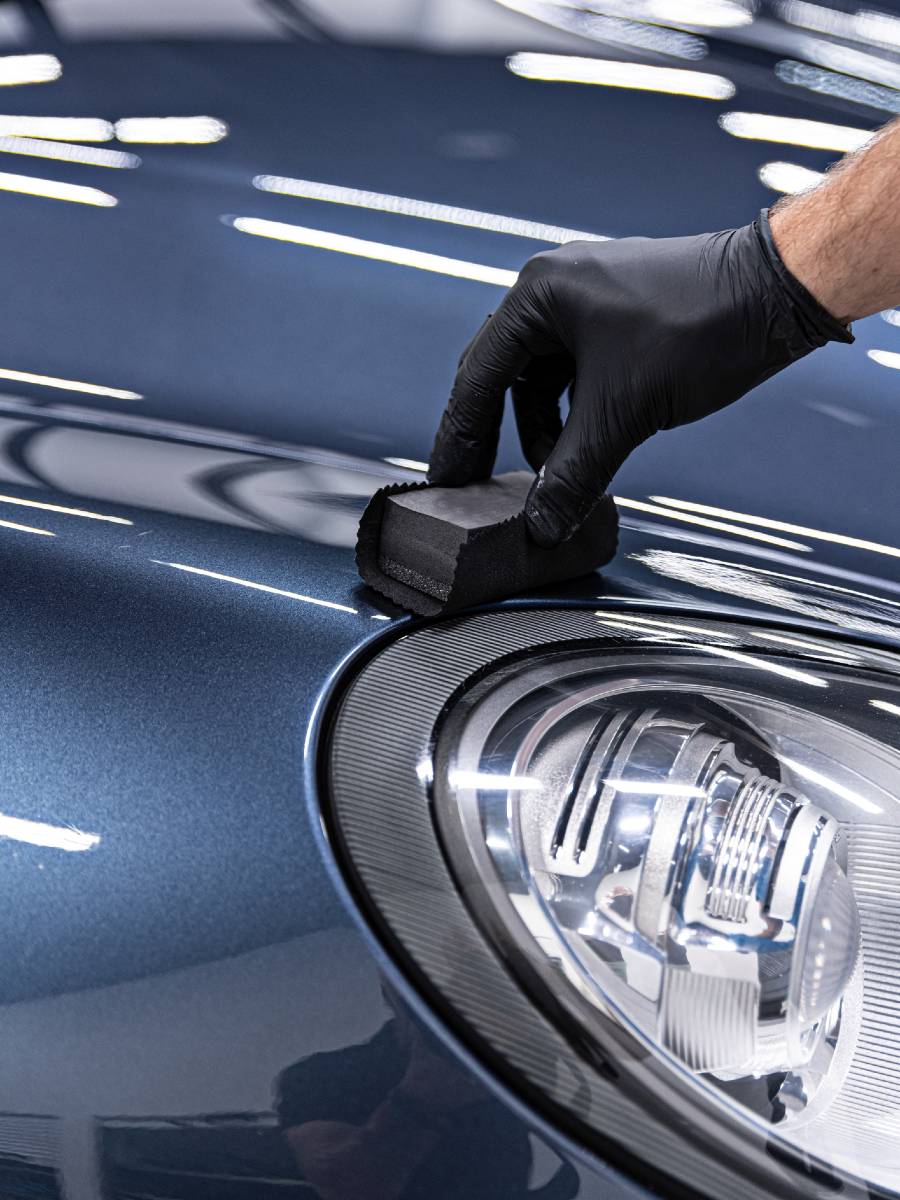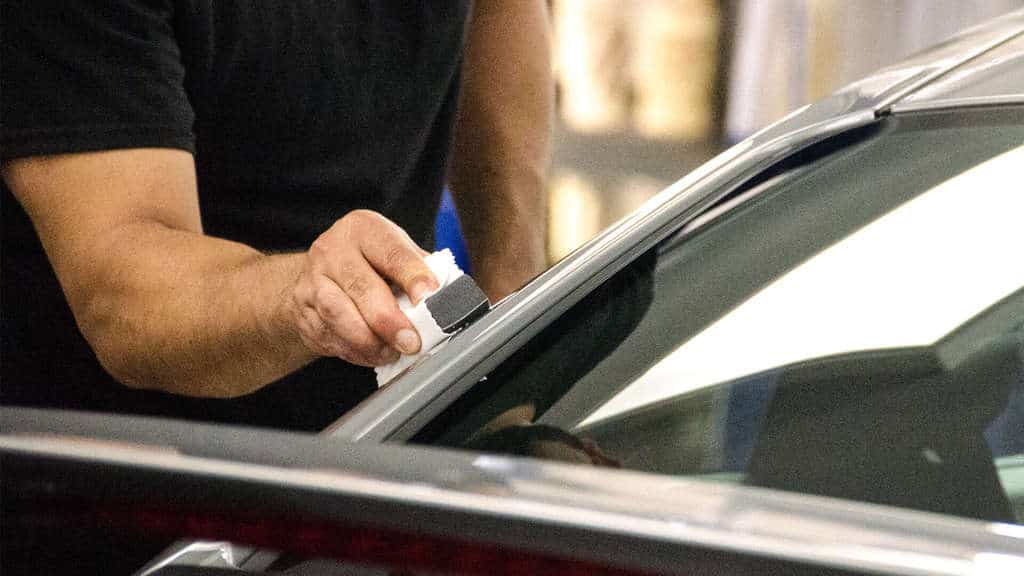Ceramic Coating: The Future of Automotive Surface Protection
Ceramic Coating: The Future of Automotive Surface Protection
Blog Article
Ceramic Finishing vs. Standard Wax: Which Provides Much Better Long-Term Security?
The dispute between ceramic layers and standard wax for vehicle protection has amassed significant focus amongst vehicle fanatics and professionals alike. Ceramic coverings flaunt remarkable longevity and resistance to ecological aspects, yet the intricacy of their application raises inquiries regarding accessibility and usefulness.
Overview of Ceramic Finish
Ceramic layer has acquired considerable appeal amongst vehicle lovers and detailers alike because of its advanced protective qualities. This cutting-edge technology is created to produce a long lasting, hydrophobic shield over a car's paint surface, considerably enhancing its resistance to environmental contaminants such as dust, UV rays, and chemical spots. Unlike conventional wax, which supplies a short-lived layer of security, ceramic layers bond at a molecular degree with the paint, offering lasting resilience-- commonly prolonging past two years with correct maintenance.
The application process entails careful prep work of the car's surface, including cleansing and polishing to make sure ideal bond. As soon as used, the covering treatments to create a durable layer that not only adds deepness and gloss to the paint yet also streamlines maintenance. With its hydrophobic buildings, ceramic finish allows water and dirt to slide off more conveniently, minimizing the regularity of cleans and minimizing the threat of swirl marks.
Moreover, ceramic finishings are available in numerous formulas, allowing users to pick items customized to their certain needs and choices. Generally, ceramic finishing represents a substantial innovation in paint protection modern technology, providing superior efficiency contrasted to traditional options.
Overview of Traditional Wax
Generally considered as a staple in vehicle care, wax acts as a popular choice for those looking for a simple method to improve and shield their lorry's paint - ceramic coating. Automotive wax generally consists of all-natural active ingredients, such as carnauba, or synthetic compounds, developed to create a safety layer externally of the paint. This layer not just enhances the vehicle's gloss and shine but also offers an obstacle against environmental pollutants
The application of wax is generally straightforward, making it easily accessible for both professionals and DIY lovers. When used, wax calls for a healing period, after which it hardens to form a protective covering.
Nevertheless, while wax is efficient for enhancing the aesthetic allure of a car, it is essential to note that the security it uses may demand more frequent reapplication compared to alternate products, such as ceramic finishings. In general, conventional wax continues to be a preferred option for those focusing on simplicity of use and prompt visual renovation.
Sturdiness and Durability Comparison
While both ceramic finishes and standard wax offer safety advantages for vehicle paint, their longevity and durability differ significantly. Typical wax, usually made from all-natural carnauba or artificial polymers, normally offers a safety layer that lasts approximately 3 to 6 months. This fairly short life-span requires normal reapplication to keep ideal security.
On the other hand, ceramic layers are engineered from innovative nanotechnology, forming a covalent bond with the paint surface. This causes a robust, hydrophobic layer that can withstand for 2 to 5 years, relying on the item and environmental conditions. The exceptional resilience of ceramic coatings is credited to their chemical framework, which uses enhanced resistance to scrapes, UV rays, and oxidation.

Protection Versus Ecological Aspects
Securing an automobile's paint from ecological variables is essential for maintaining its appearance look at this web-site and worth gradually. Cars are regularly revealed to a variety of elements, consisting of UV rays, bird droppings, tree sap, acid rainfall, and road grime, every one of which can jeopardize the honesty of the paintwork.
Ceramic finishings provide a durable defense versus these environmental assailants. Unlike standard wax, which can degrade rapidly under UV exposure, ceramic coatings create a sturdy, hydrophobic layer that resists the harmful effects of sunlight and ecological contaminants. This sophisticated modern technology creates a chemical bond with the automobile's surface, offering remarkable security that lasts for years, also in extreme problems.
Conventional wax, while much easier to use, generally calls for regular reapplication and offers minimal resistance to pollutants and UV rays. With time, it can damage down, leaving the paint prone to scrapes and oxidation. On the other hand, ceramic finishes keep their safety high qualities longer, significantly decreasing the risk of paint damages and making sure that official site the car preserves its aesthetic charm. Because of this, ceramic layers are increasingly identified as the superior choice for long-lasting protection against environmental aspects.
Application and Upkeep Differences
The approaches of application and subsequent upkeep for ceramic layers and standard wax differ substantially, affecting the general individual experience and effectiveness of each item. Ceramic coverings need an even more complex application procedure, usually including surface prep work that includes cleaning, sanitizing, and brightening the vehicle. As soon as the surface prepares, the ceramic finishing is used in a regulated atmosphere, usually requiring expert proficiency to guarantee appropriate healing and bonding to the paint.

While both products boost car look, the longer-lasting defense supplied by ceramic finishes may warrant their first investment, in spite of the even more demanding application procedure. Alternatively, typical wax stays a prominent option for those seeking an easier, albeit short-term, service.

Conclusion
Finally, ceramic finishings demonstrate significant advantages over typical wax in regards to toughness and ecological defense. With a lifespan prolonging 2 to five years and exceptional resistance to UV rays, dust, and chemical stains, ceramic finishes supply an extra reliable option for long-term automobile upkeep. Although the application procedure might require professional experience, the resulting cost savings and lowered frequency of reapplication underscore the worth of ceramic layers for those seeking optimum automobile security.
The argument in between ceramic coatings and typical wax for vehicle protection has garnered considerable attention among auto lovers and experts alike. Unlike typical wax, which gives a temporary layer of protection, ceramic layers bond at a molecular level with the paint, using lasting longevity-- often extending past two years with correct maintenance.
While both ceramic coverings read and standard wax offer safety benefits for automobile paint, their resilience and long life vary significantly. For vehicle enthusiasts looking for long-lasting security, ceramic coatings present a compelling benefit over conventional wax products.
In final thought, ceramic coverings demonstrate significant advantages over standard wax in terms of longevity and environmental security.
Report this page